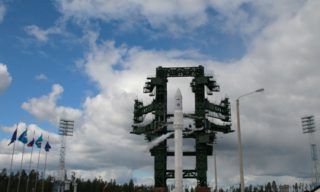45 years ago, on July 15, 1975, the first joint space flight of representatives of different countries started in the history of mankind. The start of the Soyuz Apollo pilot project was laid on October 26-27, 1970. At this time, Moscow hosted the first meeting of Soviet and American experts on the compatibility of the means of approaching and docking of manned spacecraft.
Two years later, in Moscow, an Agreement was signed between the USSR and the USA on cooperation in the exploration and use of outer space for peaceful purposes, which provided for the docking of the Soviet manned spacecraft Soyuz and the American spacecraft Apollo in open space with the mutual passage of astronauts.
On December 2-8, 1974, in accordance with the Soviet program for preparing for a joint space experiment, the flight of the modernized Soyuz-16 spacecraft was completed. During this flight, tests were carried out of the life support system, tests of the automatic system and individual components of the docking unit, development of the methodology for performing some joint scientific experiments and unilateral experiments, the formation of the installation orbits with a height of 225 km and others.
And so, on July 15, 1975 at 15 hours 20 minutes from the Baikonur Cosmodrome, the Soyuz-19 spacecraft launched with astronauts Alexei Leonov and Valery Kubasov. Seven and a half hours later, American Apollo took off from Cape Canaveral, the crew of which included American astronauts Thomas Stafford, Donald Slayton and Vance Brand. On July 17, the ships docked, becoming the prototype of the future International Space Station. During the flight, four transitions of crew members between both ships were carried out. Cosmonauts and astronauts got acquainted with the equipment of the spaceships, communicated, conducted space experiments and devoted much time to television broadcasts on Earth. Tests of the life support system, tests of the automatic system and individual components of the docking assembly were carried out.
July 19, 1975 the ships undocked. The flight phase in the coupled state lasted 43 hours 54 minutes 11 seconds. Then the Apollo moved 200 meters from the Soyuz-19. After the “Artificial Solar Eclipse” experiment, the spacecraft came closer together again. The second docking took place, during which the docking assembly of the Soyuz-19 was active. After all the checks, the divergence of the spacecraft began. The second time the ships were docked, they were two hours 52 minutes 33 seconds. The Soviet astronauts returned to Earth on July 21, 1975: the Soyuz-19 spacecraft landed a soft landing near the city of Arkalyk in Kazakhstan (total flight time – 5 days 22 hours 31 minutes). The Apollo command module with astronauts splashed in the Pacific Ocean on July 24, after conducting experiments on the American program in independent flight (9 days 1 hour 28 minutes).
The experience of the successful implementation of the Soyuz-Apollo program served as a good basis for subsequent international space flights under the joint Mir-Shuttle program, in which Russian astronauts and cargo were put into orbit by shuttles, and American astronauts carried out expeditions to the orbital station “Mir”, as well as for the creation with the participation of many states of the world and the joint operation of the International Space Station.



























